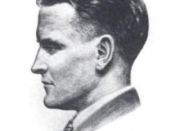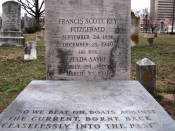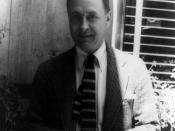In the novel, The Great Gatsby, written by F. Scott Fitzgerald, Fitzgerald explains in many ways how the upper class, are different then the lower class. The lower-class is not as privileged as wealthy people because they do not have as much money to do whatever they want with. The lower class has to work hard to earn money, unlike wealthy people. You can obviously tell the upper class from the lower class because wealthy people display their money through their appearance.
Fitzgerald lived in a time when wealth and indulgence prospered in the cities, when the upper class looked down upon all other parts of society as being inferior and insignificant. Written in 1925, The Great Gatsby is as much a part of its age as a brilliant dramatization of the social and economic corruption of the Jazz Age, marked by
prohibition, and gangs. Fitzgerald's fascination with wealth led him to make the theme of class and the extreme differences between the social classes a key theme in The Great Gatsby.
Throughout the novel, we are shown the social gap between the rich and the poor and witness the other differences between them. In the first few chapters, Fitzgerald constantly alternates between the various social worlds and by doing so emphasizes these differences. The issue of money is a focal point when discussing the social classes. The possession of wealth is the factor, which determines one's place in society.
Wealth also determines the location of where people live. In the novel there are four locations where the action takes place. These locations are West Egg, East Egg, New York and The Valley of the Ashes. Fitzgerald describes, East Egg and West Egg as "identical in contour and separated only by a courtesy bay ... They are not perfect...


